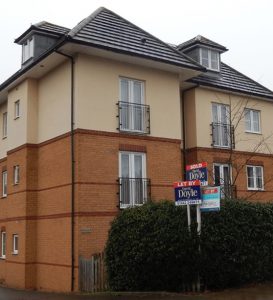
The Localism Act 2011 gave councils the power to restrict access to social housing. Since the law change became effective, the total number of households on waiting lists in England has reduced by 700,000. Good news, you might think?
The housing charity, Crisis, has blamed the act for at least 20% of homelessness, saying that the restricted eligibility of vulnerable people meant they were often unable to register for social housing, forcing them to live in emergency housing, such as B&Bs and hostels, or even on the street.
Local authorities had previously been required to consider all housing applications and had few powers to refuse applications or remove households from the list.
There are some astonishing variations in the number of households on local authority waiting lists. Lists have substantially increased in many areas, including Brighton and Hove, Lancaster, North Devon, Cornwall, and the North East, while in other areas waiting lists have all but disappeared. Wiltshire’s list has reduced from over 17,000 to just 2,149 while Camden’s has reduced from 19,000 to 3,000.
These variations are due to different local authority restrictions now in existence around the country.
35% of councils have restricted access to social housing to those with a ‘local connection’ to a borough, often of over five years. Local connections are often lost when households in poverty are forced to move on from where they live, through eviction or to find accommodation with an affordable rent.
Half of all councils restrict access to social housing from those who have a history of rent arrears, including Liverpool, where the City Council refuses applications for social housing from those with ‘significant’ rent arrears – unless they have established a debt repayment plan with the landlord. Private landlords also are reluctant to let properties to households with a history of rent arrears.
Wales, Scotland and Northern Ireland have devolved powers over housing so are not affected by the act. Government figures show the number of homes built for social rent has fallen from 39,600 to 5,300 in England since 2010.
The practice of trimming housing waiting lists by forcing households away from home into areas where they are able to access social housing has resulted in massive increases of households in poverty moving to areas where there are few local jobs to support them. Cornwall has seen a 143% increase in households waiting for social housing – but it is an area with an existing local housing shortage exacerbated by decreasing average household sizes and a high demand for second homes.
The government’s aim for the reforms was to provide “around eight million people in England with a decent home at a rent lower than they would be able to find in the private rented sector. It can make an immense difference to their health, happiness and quality of life. But the previous social housing system had some fundamental flaws†that were “too rigidly set by central government, so that councils found it hard to adapt and meet local needsâ€.
Isn’t it time to recognise that the reforms are failing households in need of social housing?
SH/LCB

